 This week, while we’re all cooped up inside on account of the pandemic, Worf and his team are stranded outside in the desert heat. But when the attacker they capture escapes his bonds, they’re going to get more to drink than they asked for. Who’s holding up the best? Who’s going to be the most embarrassed when this is all over? Does Mark McHenry have excellent parents or terrible ones? All this and more in Survival, the book that needs to review its Pokémon weaknesses.
This week, while we’re all cooped up inside on account of the pandemic, Worf and his team are stranded outside in the desert heat. But when the attacker they capture escapes his bonds, they’re going to get more to drink than they asked for. Who’s holding up the best? Who’s going to be the most embarrassed when this is all over? Does Mark McHenry have excellent parents or terrible ones? All this and more in Survival, the book that needs to review its Pokémon weaknesses.
Month: March 2020
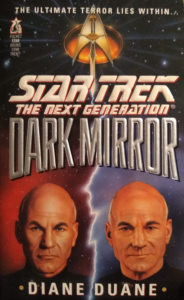 This week, when the universe sneezes, the dolphins are the first to feel it. But when the crew realizes where they are, they ping-pong the Enterprise off the Enterprise while they decide who gets to sign up for the espionage mission. What do this book and GameFAQs have in common? Has the Federation somehow improved its already dizzyingly fast trauma recovery speed? Did Diane Duane accidentally set this book during Wolf 359? All this and more in Dark Mirror, the book that’s chock full of bremsstrahlung.
This week, when the universe sneezes, the dolphins are the first to feel it. But when the crew realizes where they are, they ping-pong the Enterprise off the Enterprise while they decide who gets to sign up for the espionage mission. What do this book and GameFAQs have in common? Has the Federation somehow improved its already dizzyingly fast trauma recovery speed? Did Diane Duane accidentally set this book during Wolf 359? All this and more in Dark Mirror, the book that’s chock full of bremsstrahlung.
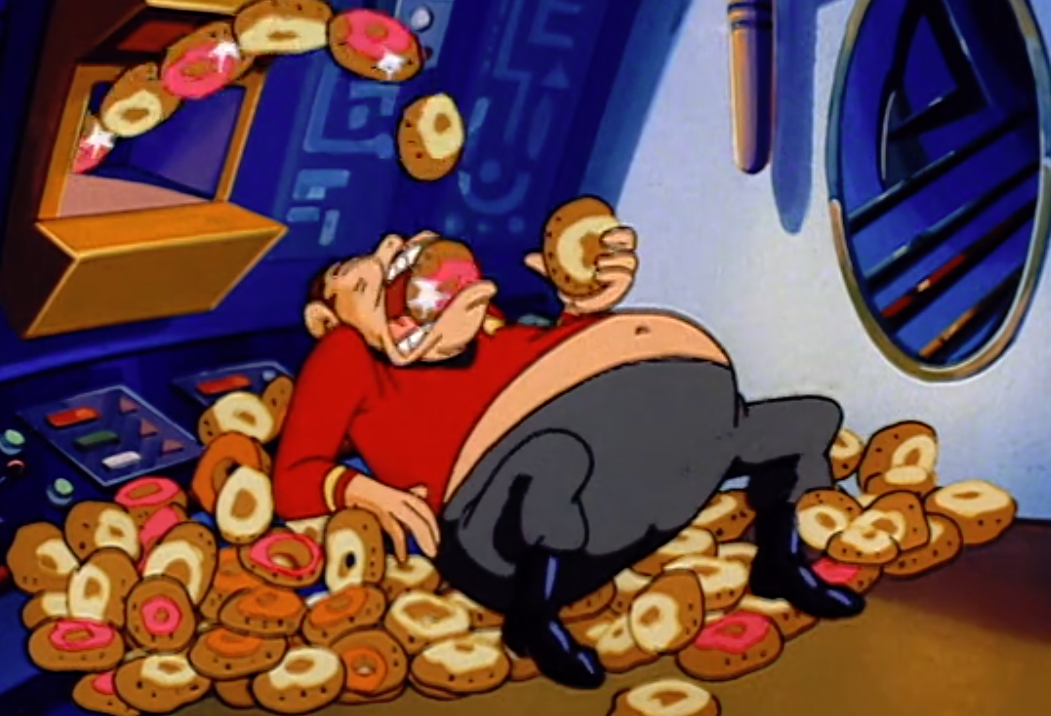 I know what I’m about to say won’t win me a lot of internet friends, but I sincerely believe it: I find Animaniacs difficult to watch nowadays.
I know what I’m about to say won’t win me a lot of internet friends, but I sincerely believe it: I find Animaniacs difficult to watch nowadays.
Don’t get me wrong. I didn’t say it didn’t hold up well, although in ways such as those I’m going to detail here, it doesn’t. Also, it’s important to me for several reasons. The animation is as gorgeous now as it was then. Along with The Simpsons and Calvin & Hobbes, I give it most of the credit for instilling both a strong sense of irony and a healthy distrust of authority. And I did love it when I was a kid. Even though a lot of the jokes went straight over my head, getting them felt like something to aspire to. I was a GT kid and insufferable know-it-all who bought hard into his own hype, and the show’s obscure references and adult sensibility put the lie to my own estimations of my intelligence. Watching it nowadays, however, I often feel as though its writers set out solely to please themselves, and any entertainment experienced by anyone outside their clique was entirely incidental.
In a typical Warners sketch, Yakko, Wakko, and Dot drop into a piece of history and/or pop culture and irritate the central figure(s) of that moment until either they’re kicked out, they decide to leave (the one that happens here), they drive that person completely insane, or they inspire their defining work. “Star Truck” is no exception, although they don’t really send anyone fully off the deep end. It’s honestly a get-in-get-out kind of deal, with a smattering of references and a couple of running jokes.
The Enterprise is expecting two delegates, but the Andorians get waylaid by an Atari 2600, so they get the Warners instead. They do a little bit of goofing around as they dismount the transporter pad, and right before they run off, Wakko gives Scotty—sorry, Squatty—a donut. Scotty gorging himself on donuts is the primary running joke in the episode, and I’m here to tell you that it aged about as well as a carton of milk left out in the summer sun.
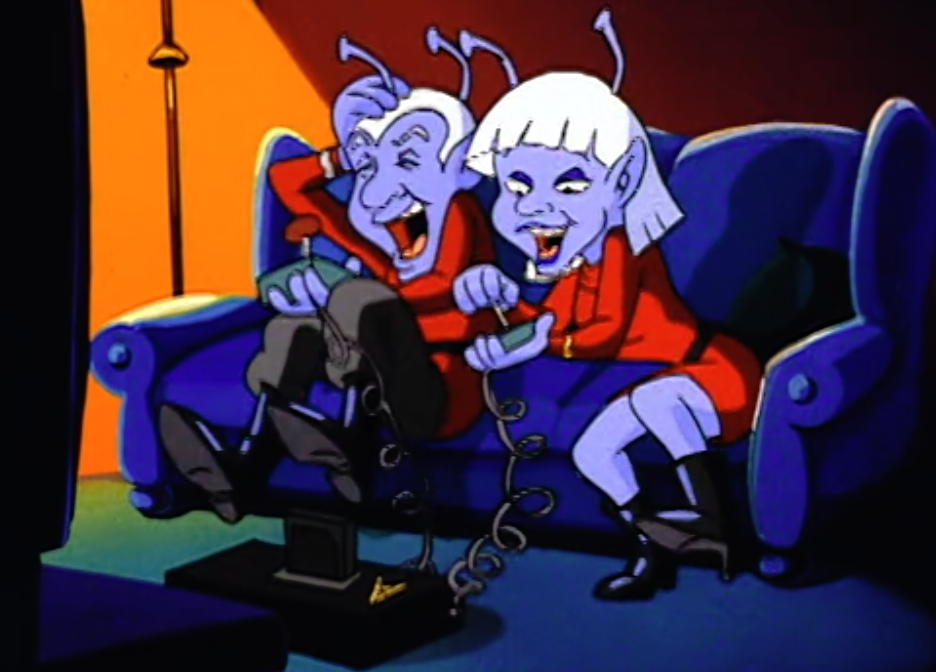
The greatest video game entertainment the 23rd century has to offer.
I’ve made no secret of my distaste for jabs at James Doohan’s middle-age weight gain in the past. Doohan was a war hero, his performance in Star Trek inspired countless students to pursue careers in engineering, and he was by all accounts an indisputably good guy—his story about helping a woman get over suicide is an all-timer. No person of any size should be shamed for it, but insofar as anyone deserves it less than anyone else, one could easily argue that Doohan could be a first-rounder for such consideration. And yet, sadly, a lot of the average person’s understanding of the arc of James Doohan’s life is nothing more than “he was on Star Trek and then he got fat”. In the days when this episode aired, there was a far greater number of targets that the majority of the population considered acceptable for teasing, and James Doohan simply had the misfortune of intersecting with two of those: obesity, and nerd pursuits.
Partly it’s about the low-hanging fruit nature of it, but there’s also some rank hypocrisy in play. Sure, Star Trek is definitely well within the purview of nerddom. But so is the idea of reviving and paying homage to ’20s- and ’30s-style animation. And only a giant nerd could come up with the kind of absurdly high-concept premises that comprise the show. Who wakes up and comes up with “a stray dog and cat, but the cat is Rita Hayworth and the dog is Dustin Hoffman’s character from Rain Man“? How do the synapses have to fire to come up with “It’s Goodfellas, but they’re pigeons”? I don’t mean that in a condescending or pejorative way—it’s just, who else comes up with stuff like that? From there it becomes obvious that it’s not about being a nerd thing; it’s about being the right kind of nerd thing. And in this case Star Trek has been taken to task by a small cadre of self-appointed judges and found wanting.
I’ll always have fond memories of Animaniacs from my time watching it after school as a child. But it’s easier to see from the vantage point of adulthood that the show had an unattractive bullying streak. Another short I often find myself contemplating at random moments is the one about the Please Please Pleese Get a Life Foundation. There are certainly kernels of truth in that sketch; I even work with a guy who’s pretty much exactly like the people in it. And to stay mindful of historical context, contending with internet know-it-alls was new territory in the early and mid-90s. The temptation to clap back at these people who suddenly had a new shield of anonymous empowerment behind which to hide and tell them they were doing their jobs wrong must have been enormous. (No one had told us to never read the comments yet.) But these days I’m less thrilled not just about how the wonks in the episode are portrayed physically (more fat-shaming!), but also about why they did it at all. The people creating Animaniacs already had the high ground; creating culture is always more valuable than commenting on it. The people who create television don’t owe their viewers anything, but at the same time, without those viewers, the work’s continued existence cannot be justified. And whether they hate it or love it, they’re watching. Ultimately, the show’s punch curved downward. In the end, I hope it isn’t too much to ask that the forthcoming revival shows a little more compassion and thoughtfulness in how it selects and attacks its targets.
Okay, this kind of got away from me. But putting aside the exploration of toxicity and getting back to the actual subject matter, this is a decent episode, no great shakes. Less prominent (and much funnier) than the Scotty business is a gag where Spock performs a mind meld with Wakko and absorbs his goofiness. He rips a Maurice LaMarche signature belch, and, when asked how he’s feeling, responds, “Faboo, Captain.” The dissonance is funny. There are some sub-MAD-level name parodies; basically any vowel in a single-syllable name is replaced with “or” (Kork, Spork, Korn). There’s a reference to the fan dance. Like I said, there’s not much meat to this episode—it’s basically in and out in about seven minutes.
“Star Truck”, like a distressing amount of Animaniacs, is content to settle for “This thing is weird, let’s have a laugh at its expense.” I understand that cartoons that short probably don’t allow for much more than that, but in that case, they’d do better to spend their brief runtime making the viewer laugh instead of trying to snark about something. It’s a bit surprising how easily Shatner gets off the hook, although that’s probably because they already got their fill of that in a previous episode.1 If you haven’t watched Animaniacs in a while and you’re thinking of going back and seeing if it’s still fresh, don’t be surprised if it doesn’t live up to your memory. And one more time: leave James Doohan alone!
Animaniacs is, as of this writing, streaming on Hulu. Here’s a direct link to the episode with “Star Truck”, which begins at the 8:25 mark.
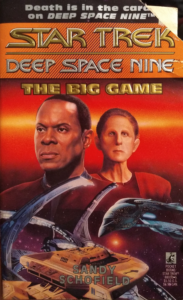 This week, when Quark’s poker tournament draws a full house, Odo bets it’ll flop. But when one of the players is murdered, Odo decides to ante up, flush out the culprit, and get some straight answers. Meanwhile, subspace waves cut the station’s decks, and Sisko doesn’t know jack about where they’re coming from. Will he fold under Bajoran and Cardassian pressure? Does he have an ace in the hole? Is Deep Space Nine royally screwed, or is there a solution that suits everyone? All this and more in The Big Game, the book where the deal goes down.
This week, when Quark’s poker tournament draws a full house, Odo bets it’ll flop. But when one of the players is murdered, Odo decides to ante up, flush out the culprit, and get some straight answers. Meanwhile, subspace waves cut the station’s decks, and Sisko doesn’t know jack about where they’re coming from. Will he fold under Bajoran and Cardassian pressure? Does he have an ace in the hole? Is Deep Space Nine royally screwed, or is there a solution that suits everyone? All this and more in The Big Game, the book where the deal goes down.


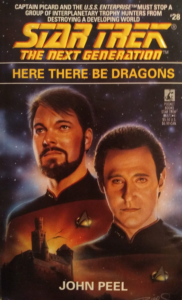 This week, a space yacht hanging out inside a stellar cluster is only the first impossible sight of many to come for the Enterprise crew. But when they venture inside to visit Planet Germany, Picard and Ro make the mistake of sampling the wares. Now they have to escape or spend the rest of their lives posing as peasants. Will the Enterprise make it out in one piece? Will the Prime Directive make it out in one piece? Will Worf’s dignity make it out in one piece? All this and more in Here There Be Dragons, the book that swears it’s not touching.
This week, a space yacht hanging out inside a stellar cluster is only the first impossible sight of many to come for the Enterprise crew. But when they venture inside to visit Planet Germany, Picard and Ro make the mistake of sampling the wares. Now they have to escape or spend the rest of their lives posing as peasants. Will the Enterprise make it out in one piece? Will the Prime Directive make it out in one piece? Will Worf’s dignity make it out in one piece? All this and more in Here There Be Dragons, the book that swears it’s not touching.